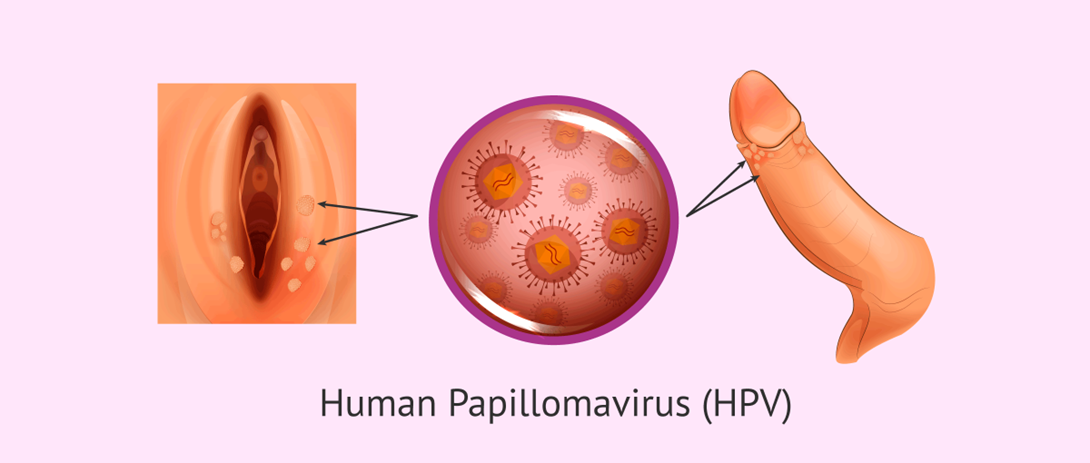Symptoms include bumps in and around the genitals. Spreads through any sexual contact (anal, oral, and vaginal), and also by skin to skin contact. A vaccine exists to help prevent this disease. Which of the following STIs is this?
Human papillomavirus (HPV)
Genital herpes
Chlamydia
Gonorrhea
The Correct Answer is A
Choice A reason: HPV is a common STI that causes genital warts and can lead to cervical cancer. It can be transmitted by any sexual contact or by skin to skin contact. A vaccine is available to protect against some strains of HPV.
Choice B reason: Genital herpes is an STI that causes painful blisters and sores on the genitals. It can be transmitted by any sexual contact or by skin to skin contact. There is no vaccine for genital herpes, but antiviral medications can reduce the symptoms and frequency of outbreaks.
Choice C reason: Chlamydia is an STI that causes inflammation and discharge from the genitals. It can be transmitted by any sexual contact. There is no vaccine for chlamydia, but antibiotics can cure the infection.
Choice D reason: Gonorrhea is an STI that causes pain and discharge from the genitals. It can be transmitted by any sexual contact. There is no vaccine for gonorrhea, but antibiotics can cure the infection.

Nursing Test Bank
Naxlex Comprehensive Predictor Exams
Related Questions
Correct Answer is B
Explanation
Choice A reason: Human immunodeficiency virus (HIV) is incorrect because it is not characterized by recurrent episodes. It is a chronic infection that progressively damages the immune system and can lead to acquired immunodeficiency syndrome (AIDS).
Choice B reason: Herpes simplex virus (HSV) 2 is correct because it is characterized by recurrent episodes. It is a viral infection that causes genital herpes, which is marked by painful blisters and sores in the genital area. The virus remains dormant in the nerve cells and can reactivate periodically, causing outbreaks.
Choice C reason: Human papillomavirus (HPV) is incorrect because it is not characterized by recurrent episodes. It is a viral infection that causes genital warts and cervical cancer. The virus can persist in the body for a long time, but it does not cause repeated symptoms.
Choice D reason: Cytomegalovirus (CMV) is incorrect because it is not characterized by recurrent episodes. It is a viral infection that usually causes mild or no symptoms in healthy people, but can be serious in people with weakened immune systems or unborn babies. The virus can remain latent in the body, but it does not cause flare-ups.
Correct Answer is B
Explanation
Choice A reason: Hyperbilirubinemia is incorrect because it is not a major complication of infants of diabetic mothers. It is a condition where the baby has high levels of bilirubin in the blood, which can cause jaundice. It can occur in any newborn, but it is more common in premature babies, babies with blood type incompatibility, or babies with infections.
Choice B reason: Hypoglycemia is correct because it is a major complication of infants of diabetic mothers. It is a condition where the baby has low blood sugar levels, which can cause seizures, lethargy, or poor feeding. It can occur because the baby's pancreas produces too much insulin in response to the mother's high blood sugar levels during pregnancy.
Choice C reason: Hypoinsulinemia is incorrect because it is not a major complication of infants of diabetic mothers. It is a condition where the body does not produce enough insulin, which can cause high blood sugar levels. It can occur in children or adults with type 1 diabetes, but not in newborns of diabetic mothers.
Choice D reason: Hypercalcemia is incorrect because it is not a major complication of infants of diabetic mothers. It is a condition where the baby has high levels of calcium in the blood, which can cause muscle weakness, vomiting, or kidney stones. It can occur in babies with certain genetic disorders, such as Williams syndrome, or babies with hyperparathyroidism, but not in infants of diabetic mothers.
Whether you are a student looking to ace your exams or a practicing nurse seeking to enhance your expertise , our nursing education contents will empower you with the confidence and competence to make a difference in the lives of patients and become a respected leader in the healthcare field.
Visit Naxlex, invest in your future and unlock endless possibilities with our unparalleled nursing education contents today
Report Wrong Answer on the Current Question
Do you disagree with the answer? If yes, what is your expected answer? Explain.
Kindly be descriptive with the issue you are facing.
